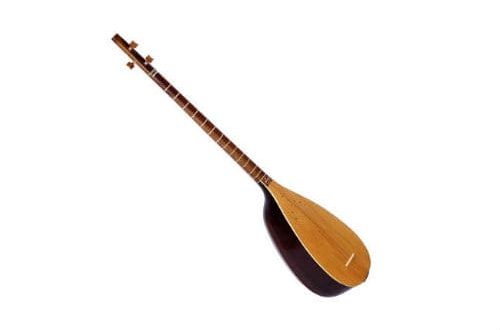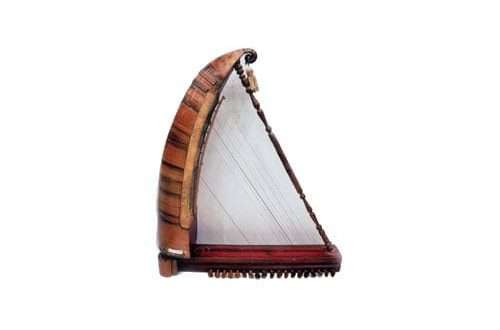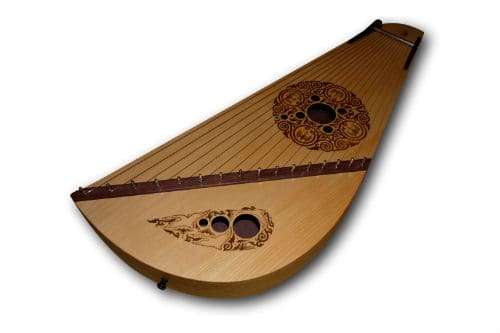
Gusli: description of the instrument, history, varieties, sound, composition, use
Contents
The first thing that comes to mind with the phrase “Russian folk musical instrument” is the gusli. Having appeared many centuries ago, they still do not lose ground: the interest in them from the side of performers only increases over the years.
What is gusli
Ghouls are called an old Russian instrument belonging to the category of stringed, plucked instruments.

In ancient times, there were many varieties of instruments similar to the harp:
- harp;
- kifara;
- grown up;
- psaltery;
- lyre;
- Iranian santoor;
- Lithuanian kankles;
- Latvian kokle;
- Armenian canon.
Modern harp is a trapezoidal structure with stretched strings. They have a loud, sonorous, but soft sound. The timbre is overflowing, rich, reminiscent of the chirping of birds, the murmur of a stream.
An old Russian invention is an integral part of folk orchestras, ensembles, and is used by musicians of folk groups.
Tool device
Despite the abundance of varieties, all models have a similar design, the main details of which are:
- Frame. Production material – wood. It has three components: the top deck, the bottom deck, the shell connecting the decks on the sides. The top deck is made of spruce, oak, it has a resonator hole in the middle, which helps to prolong the sound, make it stronger, richer. The lower deck is made of maple, birch, walnut. The front part of the case is equipped with a plate with pins, a threshold for tuning pegs, and a stand. From the inside, the body is equipped with vertically glued wooden bars that increase resistance and evenly distribute sound vibrations.
- Strings. How many strings an instrument has depends entirely on its type. The quantity varies from a few pieces to several dozen. The strings stretch almost along the entire body, being fixed on metal pins.
- String holder. A wooden block placed between the stretched strings and the top deck. Helps the string to vibrate freely, amplifies the sound.
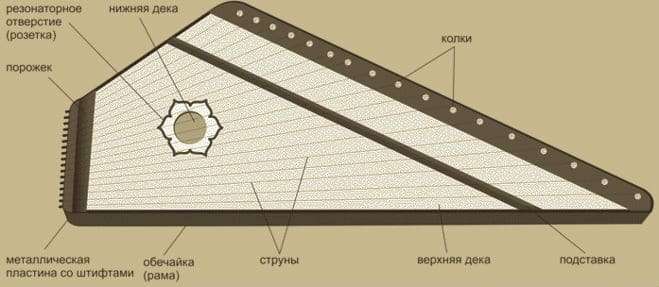
History
Gusli is one of the most ancient instruments of the planet. Their history began in ancient times, it is impossible to determine the exact date of birth. Presumably, the idea of creating such an instrument of the ancient people was prompted by the bowstring: with strong tension, it makes a sound that is pleasant to the ear.
Russian gusli, obviously, got its name from the Slavic word “gusla”, which is translated as bowstring.
Almost every nation in the world has similar stringed instruments. In Ancient Russia, even before the appearance of written evidence, guslars were depicted in drawings. Ancient models were found in large numbers during archaeological excavations. The heroes of the epic epic (Sadko, Dobrynya Nikitich) were experienced harpists.
This instrument in Russia was a universal favorite. Under it they danced, sang, celebrated holidays, held fistfights, told fairy tales. The craftsmanship was passed down from father to son. The wood that was preferred as a base was spruce, sycamore maple.
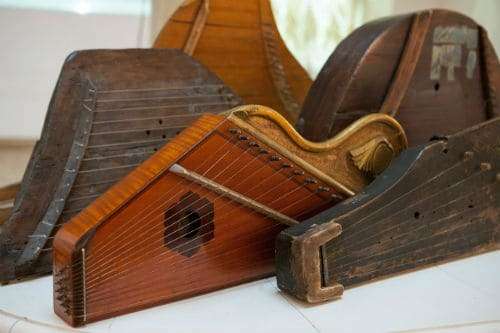
In the XV-XVII centuries, the harp became constant companions of buffoons. They were used in the process of street performances. When buffoons were banned, the tools they used also disappeared. Russian creativity was revived with the coming to power of Peter the Great.
For a long time, the harp was considered a pleasure for the peasants. The upper class preferred the noble sound of the violin, harp, harpsichord. New life was given to the folk instrument in the XNUMXth century by enthusiasts V. Andreev, N. Privalov, O. Smolensky. They designed a whole range of models, from keyboards to plucked ones, which became part of the orchestras performing native Russian music.
Varieties
The evolution of the instrument has led to the emergence of many types, differing in the number of strings, the shape of the body, and the way sound is produced.
Pterygoid (voiced)
The oldest variety of Russian gusli, for which the sycamore tree was used (another name for ancient wing-shaped models is sycamore).
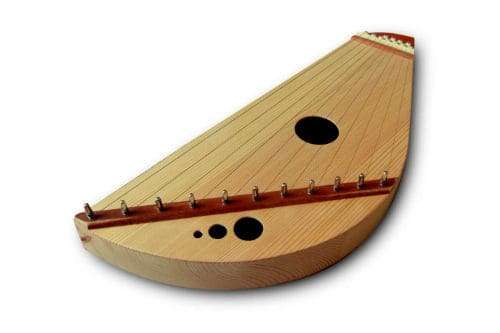
The most popular today, have great customization options. The number of strings varies, usually 5-17. The scale is diatonic. The strings are fan-shaped: the distance between them narrows as you approach the tailpiece. The use of wing-shaped models – the performance of solo parts, as well as as an accompaniment.
Lyre-shaped
They are called so because of the resemblance to the lyre. A distinctive feature is the presence of a playing window, where the performers placed their second hand to manipulate the strings.
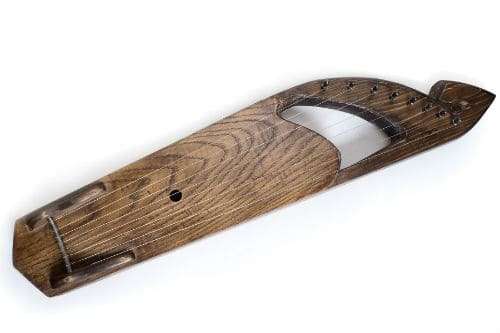
Helmet-shaped (psalter)
The helmet-shaped harp had 10-26 strings in stock. Playing them, the harpist used both hands: with the right he played the main melody, with the left he accompanied. The origin of this model is controversial: there is a version that they were borrowed from the peoples of the Volga region (there are similar Chuvash, Mari gusli in Russian).
The large harp of this type was called the “psalter”: they were often used by the clergy in temples.
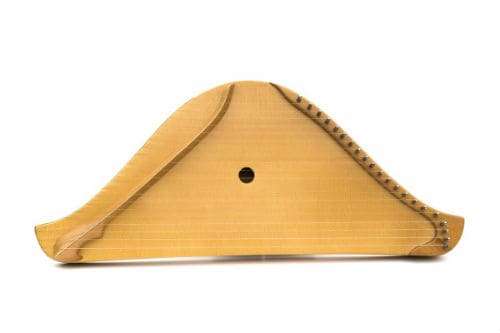
Fixed keyboards
They were designed at the beginning of the 4th century, the basis is a rectangular harp. They look like a piano: the keys are on the left, the strings are on the right. By pressing the keys, the musician opens strictly defined strings that should sound at the moment. The range of the instrument is 6-49 octaves, the number of strings is 66-XNUMX. It is used mainly for accompanying purposes, in orchestras of folk instruments.
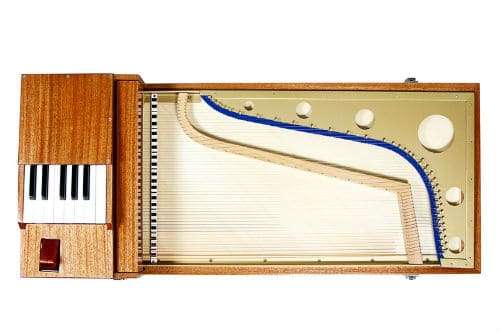
Stationary plucked
They are a metal frame of a rather large size, inside which strings are stretched at two levels. The frame is placed in a special case equipped with legs – this allows it to stand on the floor, the performer stands nearby.
It is not easy to use such an instrument, but it has a wide range of performance possibilities, allowing you to perform masterpieces of any complexity, any musical direction.
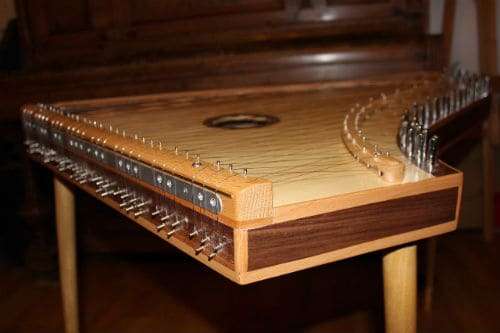
Play technique
In ancient Russia, the harp was played while sitting, laying the instrument on their knees, the upper end rested on the chest. The narrow side of the structure looks to the right, the wide side to the left. Some modern models suggest that the musician performs the piece while standing.
Sound extraction occurs by means of impact on the strings with fingers or a mediator. The right hand touches all the strings at the same time, while the left hand muffles sounds that sound too loud at this time.
Common playing techniques are glissando, rattling, harmonic, tremolo, mute.
Gusli production is carried out by small enterprises that make products to order. A musician can order an instrument that is suitable in size for his height, build – this will greatly facilitate playing the harp.




